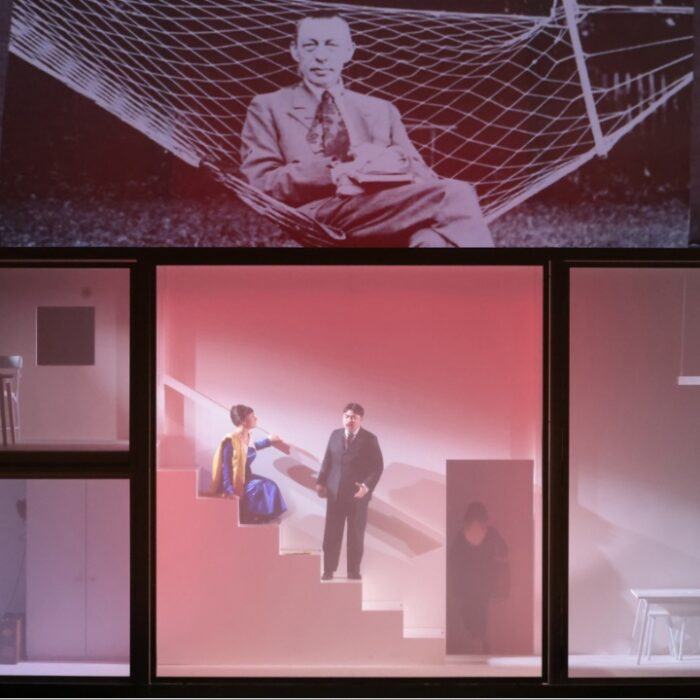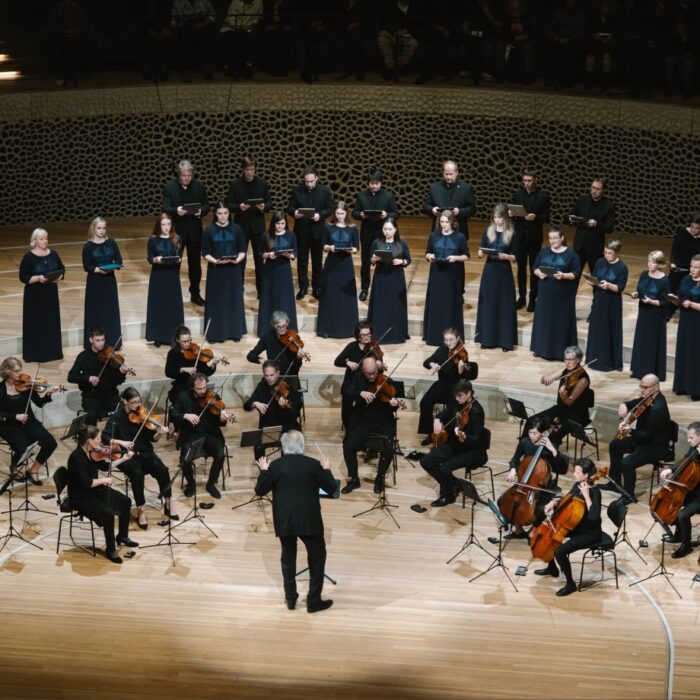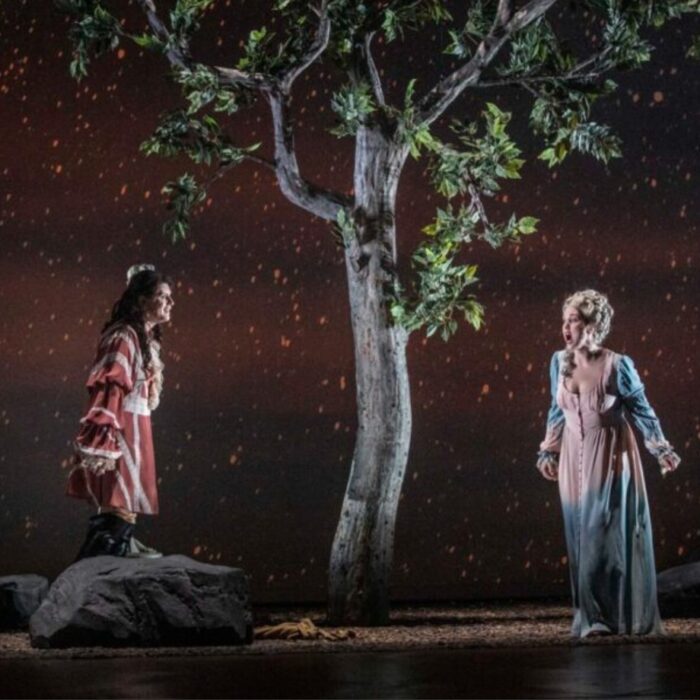
Opéra Grand Avignon 2025 Review: Don Giovanni
By Andréas Rey(Photo: © Opéra Grand Avignon)
From October 10 to 14, Opéra Grand Avignon is staging Mozart’s “Don Giovanni” in a production by Belgian director Frédéric Roels and Israeli-Brazilian conductor Débora Waldman.
First, we must salute the fluid and natural musical direction of the conductor with the Orchestre National Avignon-Provence, which beautifully recreates Mozart’s silky orchestral lacework. Nevertheless, the orchestra speeds up at times, such as during Zerlina’s arias, perhaps to indicate the headlong rush of this opera, but this means that the subtlety of the orchestration is lost. Tempo in Mozart is one of the most difficult things to get right, and many renowned conductors such as Karajan and Erich Kleiber rush ahead too much at the risk of losing it.
It is all the more regrettable, given the quality of the orchestra, that the voices of the female singers and Don Octavio are so dry, harsh, and almost martial. Admittedly, Dona Elvira, sung by French mezzo-soprano Anaïk Morel, Dona Anna, sung by French soprano Gabrielle Philiponet, and, at best, Zerlina, sung by French soprano Eduarda Melo, maintain very good articulation and projection, but they impose the arias rather than letting them be heard. Dona Anna’s arias, for example, are too rigid in relation to Don Octavio and sound dry, while Chinese tenor Lianghua Gong as Don Octavio is too harsh, lacking in roundness and gentleness towards his lover. Only Eduarda Melo as Zerlina tends towards Mozart’s naturalness in the second act, without ever quite achieving it.
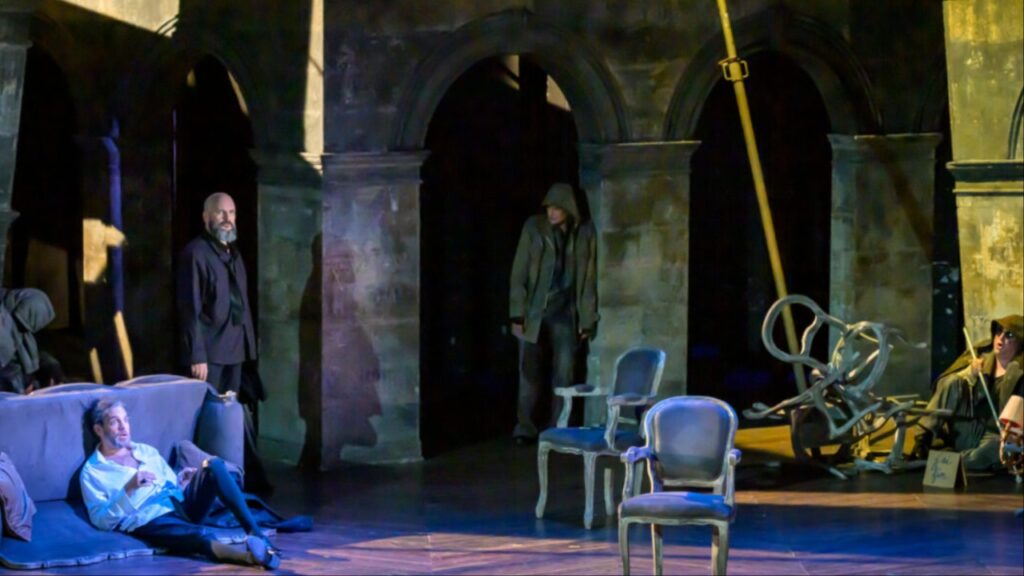
(Photo: © Opéra Grand Avignon)
However, Argentine tenor Armando Noguera as Don Giovanni knows how to use what others would consider flaws, such as a slight vibrato or the velvety softness of his timbre, to embody a Don Giovanni who is playful to the point of intoxication. His “Finch’han dal vino” is an eruption of his madness, and his duet with Zerlina, “Là ci darem la mano,” is supple, flexible, and charming, like the coils of a boa constrictor, leaving the listener dreamy. We must also applaud the Leporello of French bass-baritone Tomislav Lavoie, who also maintains this naturalness for a vocal performance full of humor in his bronze timbre. His aria from the catalog, “Madamina, il catalogo è questo,” perfectly blends humor with fluidity to show that the valet is hardly better than his master. French baritone Aimery Lefèvre as Mazetto, on the other hand, gives a slightly over-the-top performance, clearly highlighting the lover’s jealousy.
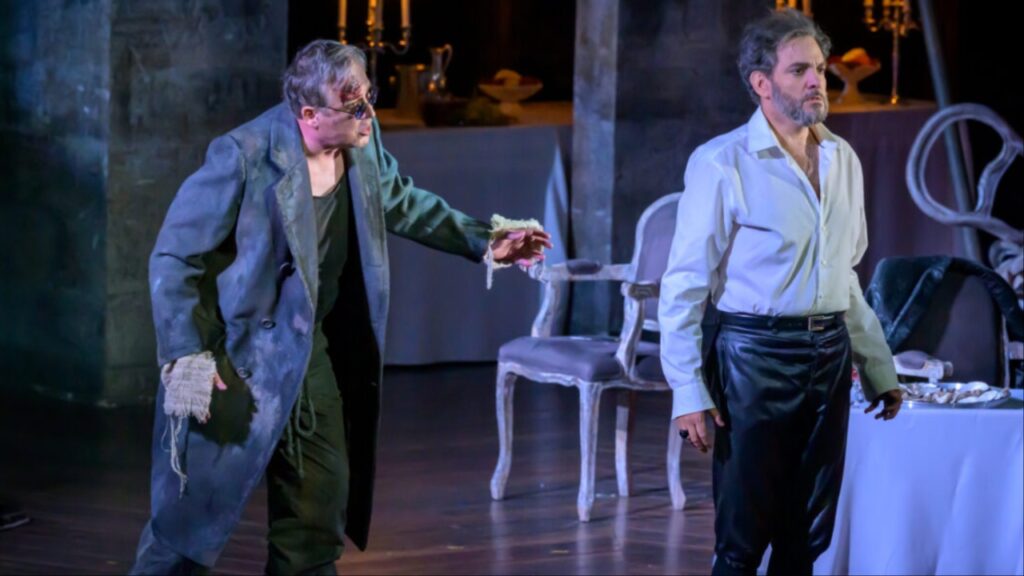
(Photo: © Opéra Grand Avignon)
However, the real problem, or rather, the real question raised by this Don Giovanni comes from the staging. The set design shows a devastated landscape, as the world will be after Don Giovanni. Chairs and sofas are overturned. Houses are supported by scaffolding to prevent them from collapsing. It is a world on the brink of collapse. The French Revolution is not far off. But why put a telephone booth on stage, thus raising questions about the era in which the drama is set? There are even contradictions with the libretto. Dona Anna saves Don Giovanni from her father for a moment before he is murdered, yet she tells Don Octavio that Don Giovanni tried to rape her. And the Commendatore is not a statue, but a beggar. So why does Dona Elvira scream when she sees him approaching? This twist removes the tragedy and horror from the duel between Don Giovanni and the Commendatore at the end of the drama. The Commendatore, surrounded by other beggars, puts his staff on Don Giovanni’s back. What does this mean? That the Commendatore was a Don Giovanni? That the Commendatore’s harshness is equivalent to Don Giovanni’s cowardice? Were the other beggars Don Juans too? And why cut the last scene in which the characters say what they are going to do, thus presenting the audience with a social landscape in tatters? It’s a mystery…
Without being excellent, this is a good “Don Giovanni” thanks to the conductor’s baton, Zerlina and Masetto, and above all, thanks to Mozart and Da Ponte.

